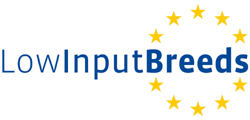QLIF: Synthesis of the results on livestock production systems
Coordinators and subproject leaders of the QLIF project have drafted a series of leaflets that gives an overview of major results achieved in the project. The leaflets are free to download.
Subproject 4 of the project dealt with the 'Development of strategies to improve quality and safety and reduce cost of production in organic and low-input livestock production systems.'
Results obtained in the QLIF subproject 4 have provided recommendations to farmers and stakeholders on how to improve organic livestock farming. Progress was made in areas of housing, feeding and management. Often the recommendations are straightforward, and ready for implementation. In other areas challenges remain. In some cases, progress with respect to one objective has created new challenges. In these cases it is difficult to decide whether a change is an overall improvement or not.
The leaflet on livestock production systems includes a focus on means to prevent and control parasitic infections in pigs and poultry, e.g., by inclusion of dried chicory roots in the diet of sows and boars to reduce the level of roundworm infections. Further, it is stressed that control of Ascaris suum and Ascaridia galli, the main helminth parasite species in pigs and poultry, needs to be achieved through a package of measures rather than single measures such as protocols for cleaning of the dunging area. Udder health, milk quality and animal welfare in organic dairy farms are other subjects where progress is described.
More information
Links
- QLIF homepage: Livestock production systems

- QLIF homepage: Subproject 4: Development of strategies to improve quality and safety and reduce cost of production in organic and “low input” livestock production systems

- Organic Eprints: Publications from subproject 4

- QLIF: Homepage

Background
The Integrated Project QualityLowInputFood, which ended in April 2009, aimed
to improve quality, ensure safety and reduce cost along the organic and "low input" food supply chains through research, dissemination and training activities. The project focused on increasing value to both consumers and producers using a fork to farm approach. The project was initiated on March 1, 2004. It is funded by the European Union with a total budget of 18 million Euros The research involved more than thirty-one research institutions, companies and universities throughout Europe and beyond.
 This website was archived on December 19, 2017 and is no longer updated.
This website was archived on December 19, 2017 and is no longer updated.



